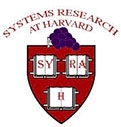Azureus is currently one of the most popular clients for BitTorrent, a file sharing protocol [7]. For a given file, the protocol embodies four main roles: an initial seeder, new seeders, atracker, and peers. Initial seeders, new seeders, and peers are all transient clients; trackers are typically web servers. The initial seeder is the source of the file. It divides the file into small pieces, creates a metadata description of the file and sends this description to the tracker. Peers discover this file description through some out-of-band mechanism (e.g., a web page) and then begin looking for pieces of the file. Peers contact the tracker to bootstrap their knowledge of other peers and seeds. The tracker returns a randomized subsets of other peers and seeds. Initially, only the initial seeder has pieces, but soon peers are able to exchange missing pieces with each other, typically using a tit-for-tat scheme. Once a peer acquires all of the pieces for a file, it becomes a new seeder. This collection of clients actively sharing a file is called a swarm. In Azureus, file descriptors and other metadata are stored in a DHT, in which all clients participate, and any node can be assigned the role of tracker if it is or is near the root of the hash of a given file's descriptor. In practice, there can be many possible trackers from which to choose for a particular file and even more possible clients for a given piece. A key challenge in efficiently implementing this protocol is providing a simple method for node selection, an example of anycast.
Distributed systems developers are beginning to use network coordinates as a mechanism to support anycast. The Azureus developers use them for two distinct purposes: (a) to optimize DHT traversal and (b) to select nearby nodes for application-level congestion monitoring. We are currently testing another coordinate-based optimization: biasing the set of nodes the tracker returns to be nearby the caller. Bindal et al. show in simulation how these locally-biased swarms reduce download times and inter-ISP traffic [3]. Future plans call for using network coordinates to optimize media streaming over the Azureus network.
We worked with the Azureus developers to analyze and improve the coordinates maintained by their system, which contains more than a million clients. We were able to modify the Azureus code internals and watch its behavior on a subset of the network because approximately ten thousand Azureus users run a plugin that automatically upgrades their version to the latest CVS release. According to the Azureus developers, the clients who use the latest release exhibit normal user characteristics, so we expect that our results generalize to the larger system.
Jonathan Ledlie 2007-02-23